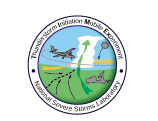

Koch-2
Hypothesis (Koch-2) concerning gravity wave generation of elevated convection |
|
|
Steve Koch on November 13, 1997 at 17:50:26: (this may be considered to be a modification of Ziegler Hypothesis (4)): Whether or not an important thermally-forced circulation develops transverse to a frontal boundary depends upon the subtle interaction between the effects of the total cloud cover distribution and the moisture availability field, the latter being determined by a nonlinear relationship between fractional vegetation cover, surface soil moisture, and root zone soil moisture. Thermal solenoids of significance for initiation of convection will only form in situations wherein the differential cloud cover acts synergistically with the moisture availability field to produce a net horizontal gradient of surface sensible heat flux in such a manner that the flux is greatest on the warm side of the front. This is consistent with the predictions of the Sawyer-Eliassen equation for the frontal circulation produced by diabatic forcing. References: Koch, S. E., and A. C. Ray, 1997: Mesoanalysis of summertime convergence zones in central and eastern North Carolina. Wea. and Forecasting, 12, 56-77. Koch, S. E., A. Aksakal, and J. T. McQueen, 1997: The influence of mesoscale humidity and evapotranspiration fields on a model forecast of a cold frontal squall line. Mon. Wea. Rev, 125, 384-409. Koch, S. E., J. McQueen, and V. M. Karyampudi, 1995: A numerical study of the effects of differential cloud cover on cold frontal structure and dynamics. J. Atmos. Sci. 52, 937-964. Dorian, P. B., S. E. Koch, and W. C. Skillman, 1988: The relationship between satellite-inferred frontogenesis and squall line formation. Weather and Forecasting, 3, 319-342. Koch, S. E., 1984: The role of an apparent mesoscale frontogenetical circulation in squall line initiation. Mon. Wea. Rev., 112, 2090-2111.
|
|
| The same instrumentation proposed by Ziegler and Mitchell, namely aircraft stepped traverses, mobile soundings, surface heat fluxes from the OK Mesonet and mesoscale models, soil moisture from those Mesonet sites that will be measuring it (but spatially enhanced with coop raingauge data), and though not mentioned by them, we also need to determine whether such a solenoidal circulation is even present. I propose to do that with the same methodology that I proposed for my Narrow Cold Frontal Rainband hypothesis, namely reliance upon the WSR-88D, Profiler Network, and one or more 915 Mhz profilers, in conjunction with aircraft traverses. Vegetation will be obtained from NDVI fields from NOAA-9 satellite. | |
| Either thermal solenoids are absent despite variable surface heating, or they exist in the absence of inhomogeneous surface heating, or either the cloud cover or the surface effects dominate the surface energy balance so that only one of these effects needs to be considered, in a sufficient number of cases. | |
|
The following appear in order; discussion points may directly refer to one or more comments preceeding it.
Click here to comment on this hypothesis. Please reference: KOCH-2. |
|